

For the first time, EDN offered the possibility for its members to send artists to the Moving Futures festival in Amsterdam, from May 22 to 25, 2019 as part of the Carte Blanche – Artist focus.
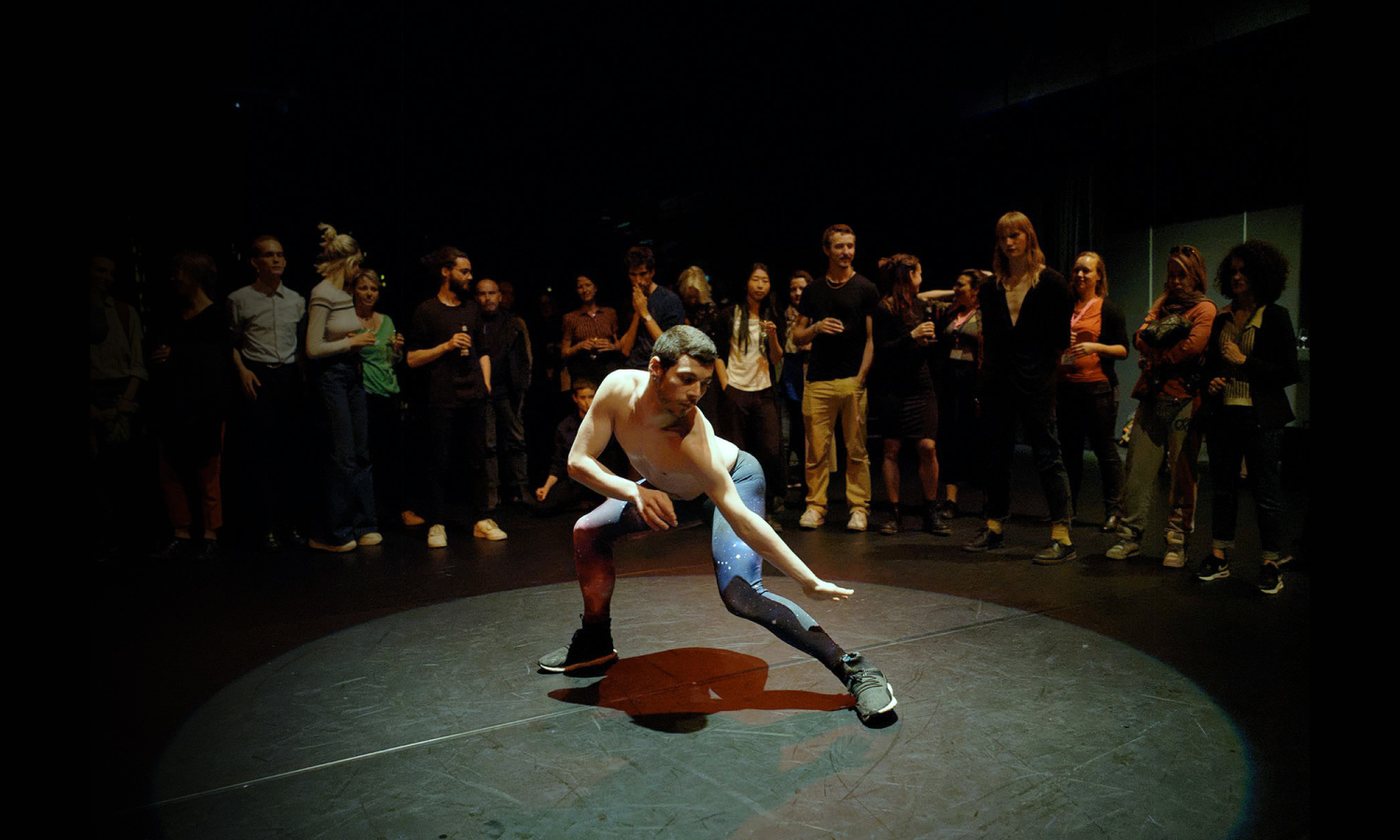
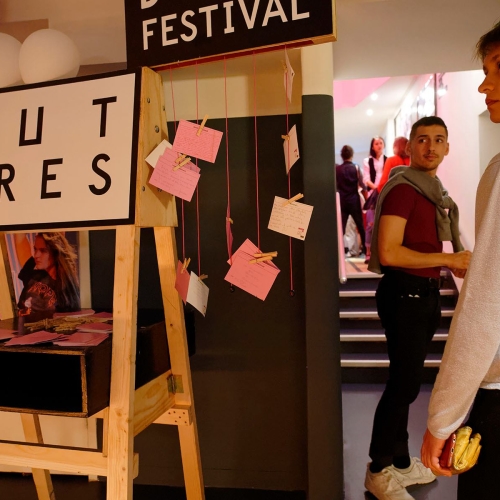
Carte Blanche for artists - why?
European Dancehouse Network has been giving staff of the network members the opportunity to travel during one week to another dancehouse since 2015. This, in order to exchange points of view about the different aspects of the work in the fields of programming, production, administration and communication. And now, 4 years later, it is time to expand this exchange. Because why wouldn’t there be a Carte Blanche opportunity for the makers?
Because they already travel the world with their shows, and get to see other houses during residencies, right? But how about makers that are just getting acquainted with the international field? Or are just getting started in their own country and are curious to see how makers work in other contexts? But for more experienced choreographers too, the Carte Blanche could be interesting as well. Makers that had several residencies already or tour their works internationally, but are curious after different contexts. Why shouldn’t artists have the possibility to take part in an exchange focusing on programming, production, administration and communication? So this Carte Blanche, designed for artists, is an invitation not only for an exchange of artistic experiences and perspectives, but an exchange regarding ways of working and sustaining as well.
Members of the European Dancehouse Network were invited to submit artists through an Open Call by EDN partner Dansmakers Amsterdam, to join the Moving Futures Festival (a partnership of Dansmakers Amsterdam, DansBrabant, Dansateliers, Random Collision and De Nieuwe Oost). So this Carte Blanche was not an individual one, but designed for a group of curious artists. The EDN Carte Blanche for Artists was organized joint with an international visitors program, which means that 20 international programmers were present and joined the program as well. 4 days of seeing 10 shows of their colleagues working at Dutch Dancehouses, meeting other – international – makers, joining for context programming and spending some time socializing in the train to visit 3 other dancehouses (from whom one EDN partner as well). They were 4 intense, but enriching days (at least from my part as mentor for the group).
“I recommend this practice as a good one that should be enhanced whenever the possibility exists. I think it can work very well both as a one-time experience, and also as a ‘regular’ practice that allows the artists pursuing an international career (but cannot yet do it by themselves) to understand different approaches in terms of works, festivals, curatorship, etc. while eventually being able to develop new relationships that can help them in the internationalization process.” – João Estevens
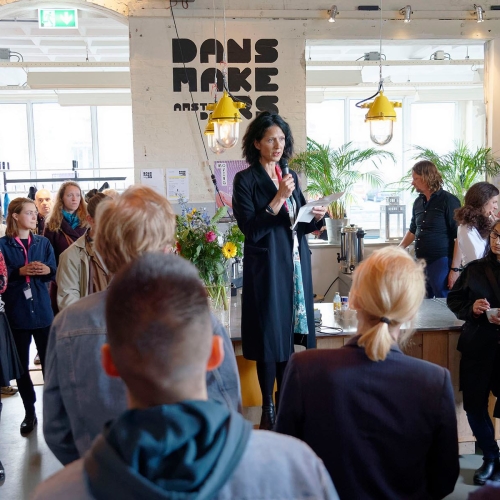
Getting to know each other
On the first day 3 artists arrived. Vittoria Caneva (submitted by Bassano del Grappa), Anders Duckworth (submitted by The Place) and João Estevens (submitted by O Espaco Do Tempo). A fourth artist joined later in the program, Cassiel Gaube (submitted by STUK Leuven). A varied company of enthusiastic souls ready to indulge. After a first toast we watched the first two shows together and armed with a roadbook and a lot of information we all went to bed early, to prepare for the next day.
“On arriving at Dansmakers on the first evening, I met Charlot who was my mentor and who introduced me to the other Carte Blanche artists. We felt that we were able to make a team and were able to exchange our experiences which were similar yet different coming from different places in Europe. It was in this group that we could discuss the work that we saw and, together with Charlot and other Moving Futures people, we could make sense of what we were seeing and put it in context. I was particularly intrigued by the use of critiques and discussions surrounding the dramaturgy which is perhaps something less present in the UK dance scene.” – Anders Duckworth
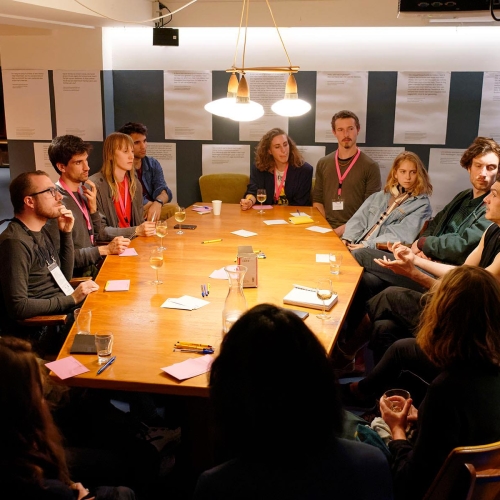
How to build a sustainable practice? Build it with each other.
The second day was a long day filled with information. The program started with a visit to Dansmakers Amsterdam where we got a tour around the building and got to meet their makers and their works, as well as their vision, projects and programs. After a lunch a professionals meeting was scheduled, followed by an experimental dance & science research by Random Collision and the University of Groningen (it was as mind-blowing as it sounds), and 2 performances in the evening.
The professionals meeting was organized to brainstorm on how to build a sustainable practice in dance. Three speakers provided three different views on how to build a sustainable practice; EDN Board Member and programmer of Bassano del Grappa Roberto Casarotto on the international perspective, Saskia de Leeuw from the Amsterdam body of funding on (lack of) money and funding, and choreographer Alida Dors on the artistic perspective. The goal of this meeting was to look for new tools to sustain the artistic practice and work of the choreographer. These tools reminded me of the Carte Blanche as a whole, and I will use some perspectives offered in this meeting to give shape to this report.
Dance is an international practice thriving from its international context, and relationships are the most important for sustainability. The connections between international organizations and makers brought dance to where it is now. Dancing is a human right, and dance has the power to connect bodies and minds. However, the international perspective is always seen through the own national perspective. During these 4 days, the artists that took part in this program had the opportunity to get insight in the context of other national ways of working. How does the funding system work in the Netherlands, and how is the situation in other European countries? What are the opportunities for makers in each of the countries, and how do you relate to international organizations? By setting up this program and allowing makers to meet each other and share their experiences and contexts, tools for sustainability in an international context are provided.
“I truly can’t believe in all the things that dance embraces, that makes you discover and experience. I went to Amsterdam with the desire of encounter new people, joining conversations and connections. I was looking for a time and space for sharing, whatever it means, whatever forms it can have. I felt almost embarassed to have found my wish being fulfilled and more. Moving Futures Festival has been an amazing opportunity for me as an artist and human being, first of all. I perceived the urgency of an involved, fully present community. A community that practice dance, and trough it practice listening and continuous questioning. This Festival has been a precious time of exchange and enrichment. In a particular way, I was fascinated by the power of sharing common values and by the ability to face the current situation with great pragmatism. I have found and rediscovered values that I completely embrace as an artist and I struggle for them to have a recognized space. Practicing dialogue, confrontation, to find new strategies and modes of action gave me the opportunity to ask myself questions, especially uncomfortable ones, and to discover myself in a context of support and activism. Empowerment is a key word I associate to this experience.
Gratitude is a personal feeling towards all the organizers, participants, artists that has took part in the Festival: this is activism and it’s important and needed.” – Vittoria Caneva
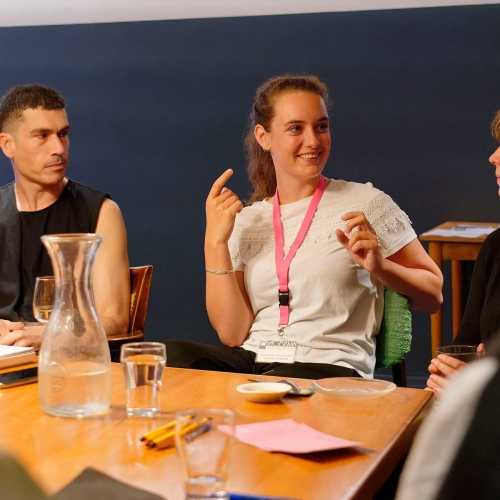
A shared responsibility of makers, institutions and funders
From the perspective of the funding parties, there are a lot of opportunities for makers to get their work financially supported. But; artists have to find these opportunities themselves. More than that, Saskia argued, we should all consider to work less, to avoid too much pressure. The dance field in the Netherlands is producing too much and thus coping with burn-outs. The solution for this problem should come from dance itself. Perhaps more co-productions and partnerships, peer to peer working and alternative ways of organization based on working together, might be the answer we are looking for. In the concluding discussion it was stated that sustainability is a responsibility. But from who? And for who? A responsibility from the institutions that have power, or from the makers themselves? We all agreed that “we can’t rely on artist’s creativity for everything.” Also from this perspective I saw connections to this Carte Blanche. Yes; makers do have responsibility to create their own sustainable practice. But yes; institutions can play a role in this and help the maker to get started. To find their way in the complex field. To give them the chance to meet others and build relationships. In this format, dance houses can give the makers working with them the opportunity to gain tools to take their own responsibility and work on their own sustainable practice.
From the makers point of view, Alida stated that the dance field can feel like an arena. If you want to get in, you know you’ll have to fight and that it’s going to hurt, because the battle is fierce. But you try to be a respectable warrior, to create your own community that joins you into battle. Alida urged the makers to try to belong, instead of merely trying to fit in. To be sustainable then, is to communicate and connect with others. What struck me, is that even though these three perspectives are quite different, they all more or less conclude the same thing: The core of having a sustainable practice is to connect, to exchange, and to not be all alone. As Roberto put it: “[Sustainability is] about the amount of relationships I can carry.” We need to build relationships in a sustainable way. With trust. With openness. By sharing the same values.
“On my trip to Moving Futures, I noticed how organizations in the Netherlands are dealing with cuts that were made a few years ago. The key for survival for these arts spaces has been to collaborate and co-produce, sharing knowledge and having a much more interconnected relationship with the dance houses and therefore the artists. This seems like something that we should be aiming to do much more in the UK. At Dansmakers we, the international artists, joined discussions on sustainable practice. It was very interesting to hear from the three speakers and I took much from their talks and the discussions that followed about how I should try to work in ways which will also benefit my artistic practice.” – Anders Duckworth
On the road again
After spending two days in Amsterdam it was time to get on the road again. The following two days consisted of visits to Moving Futures partners in other cities during the day (we travelled many, many kilometers with the train), and performances at night, followed by an aftertalk and a closing party.
By leaving the capital of The Netherlands and travelling deeper into the country, new views, ideas and insights arose. Who are the makers that are working in Arnhem, a relatively small city with a lot less inhabitants than Amsterdam has? What is the context of makers working in Rotterdam, how does their trajectory look like and how did Dansateliers cope with budget cuts and re-inventing themselves successfully? And how does it work on the other side of The Netherlands, in Tilburg, Brabant at DansBrabant (one of the few places in the country where we can drink wine at lunch), a relatively young dance house with a beautiful dance studio (“The most beautiful in Europe”). Makers were generous enough to share their works and let them even rave with us in the morning, the directors of the houses were welcoming and sharing as much as they could, without losing their curiosity for the group of visitors. And talks continued in the trains as well, getting to know each other better and getting to know the programmers that were enrolled in the international visitors program.
“Being able to tour around the different venues alongside a group of international programmers meant that we got to see and understand how these houses worked, meet new artists who were representing the dance-houses and spend time getting to know the programmers in a perhaps less pressured way than is usual. I felt that this allowed me to make real connections that I hope will be mutually nourishing and beneficial.” – Anders Duckworth
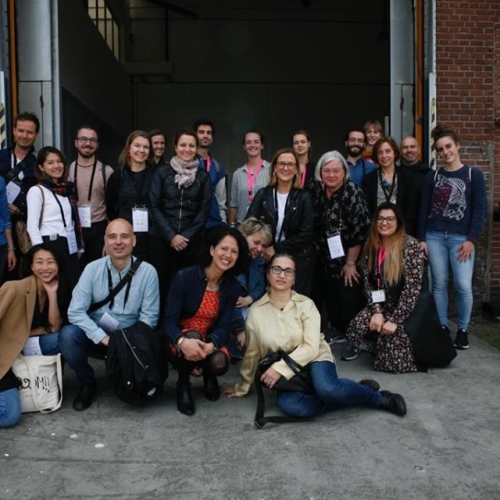
Flying off with a backpack full of inspiration
I consider this Carte Blanche for Artists as a successful one, that opens the path for more programs like this. The experience to be in a group of likeminded curious artists instead of venturing in a strange country on your own works empowering and enhances exchange. Due to the fact that the program was really full, with lots of activities and context, there was not so much time left to really dive deeper into subjects of the pieces or talks about specific ways of working or themes for example, or to have some sort of reflection with just the Carte Blanche artists. If a second Carte Blanche is organized, it is good to take this into account while making the program for the artists, so that there is time to jointly reflect and share experiences amongst each other and the sharing of thoughts could continue and we could dive even deeper. As a mentor, I searched for the best way to both give the makers their own time to reflect and to come together and share thoughts. More ‘official’ meetings during these 4 days would have been beneficial in hindsight. However, the combination of both the EDN Carte Blanche and a separate international visitors program worked really well and was conceived very positive, as well as the Moving Futures Amsterdam program in general!
A report by Charlot van der Meer, mentor of the Carte Blanche artists during Moving Futures festival.
“[The program] was a very interesting idea that seems quite relevant if you ask me. I really think we should share more, especially on a transnational level, among artistic communities and this program contributed to that. This process of sharing is important not only to share knowledge, but also to create new relationships that may be positive both for artists and institutions. By participating in the program, I was able to understand better how the dance field is organized in the Netherlands, to get to know the work of some new artists that otherwise I wouldn’t be able to do so, and to make a strong connection with the other artists that took part in the program. Honestly, that group was such a good match!”- João Estevens